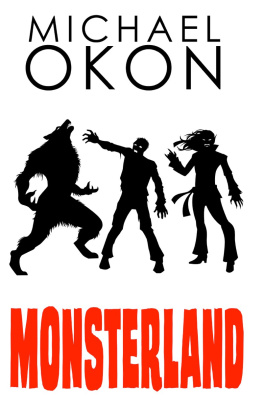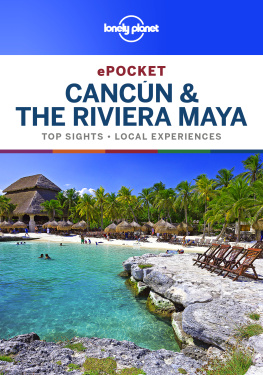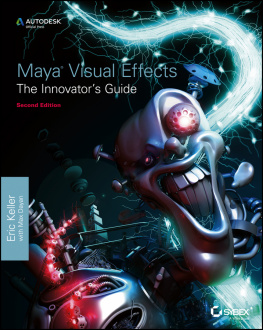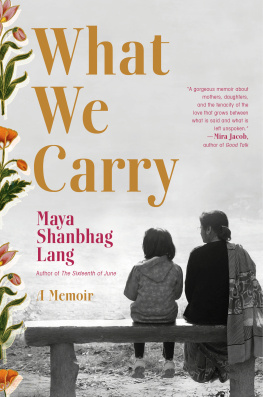Copyright 2012 by James A. O'Kon, PE
All rights reserved under the Pan-American and International Copyright Conventions. This book may not be reproduced, in whole or in part, in any form or by any means electronic or mechanical, including photocopying, recording, or by any information storage and retrieval system now known or hereafter invented, without written permission from the publisher, The Career Press.
THE LOST SECRETS OF MAYA TECHNOLOGY
EDITED AND TYPESET BY DIANA GHAZZAWI
Cover design by Noir33
Printed in the U.S.A.
To order this title, please call toll-free 1-800-CAREER-1 (NJ and Canada: 201-848-0310) to order using VISA or MasterCard, or for further information on books from Career Press.
The Career Press, Inc.
220 West Parkway, Unit 12
Pompton Plains, NJ 07444
www.careerpress.com
www.newpagebooks.com
Library of Congress Cataloging-in-Publication Data
O'Kon, James A.
The lost secrets of Maya technology / James A. O'Kon.
p. cm.
Includes bibliographical references and index.
ISBN 978-1-60163-207-4 -- ISBN 978-1-60163-610-2 (ebook) 1. Mayas--Science. 2. Maya astronomy. 3. Mayas--Mathematics. 4. Mayas--Civilization. 5. Technological innovations--History--To 1500. 6. Discoveries in science--History--To 1500. I. Title.
F1435.3.S32O46 2012
972'.6--dc23
2011045928
www.redwheelweiser.com
www.redwheelweiser.com/newsletter
Acknowledgments
When the laborious research for this book was finally completed and my thoughts collected, I prepared an outline for the book with a summary of each chapter. I sent the summary to an archaeologist who is a longtime friend and asked him for his opinions. Congratulations on your book, he responded. Just realize that archeologists will roast, reject, or ignore any book that alters popular misconception. When I had completed the manuscript and Career Press had contracted to publish the book, I contacted a number of distinguished archaeologists and requested that they consider reviewing my manuscript. I was expecting the worst after the early warning from my friend.
However, I was pleasantly surprised and flattered by the gracious and positive responses I received from this venerable group. I cannot adequately express my gratitude for the fashion in which this book was received by some of the most highly acclaimed archaeologists in the world. I was honored to receive positive acceptance for review from George Stuart, Mark Van Stone, Ed Barnhart, and Tom Sever. I want to thank then all for making this into a much better book.
I owe a special debt of gratitude to George Stuart, a true legend. He carefully read the manuscript, annotating the pages with insightful and helpful comments. His frequent e-mails with recommendations for historical accuracy and helpful comments were an education for me not only for sharing his personal knowledge and wisdom but his humanity and sensitivity.
I also want to thank Ed Barnhart for his review of this book and his contributions relating to his work with the water resources at Palenque.
Mark Van Stone is Mayanist and a noted epigrapher. I want to thank him for using his expertise in the improvement of Maya glyphs in the cover design and making contributions to dates in the history of European mathematics. I also want to thank him for inspiring me to write the Epilogue in this book.
Tom Sever, working as an archaeologist for NASA, pioneered the application of remote sensing in archaeology. His work in detecting sacbeob and ruins that are hidden in the rainforest was truly an inspiration for this book, and I thank him for his insightful comments.
I am not a trained archaeologist but a crossover engineer with a lifelong passion for the Maya civilization. My education in archaeology was on-the-job training. Nicholas Hellmuth was the first archaeologist that I ever met, in the 1980s, deep in the jungle of Guatemala. Nicholas guided me on expeditions deep into the rainforest and has traveled with me to sites verifying discoveries in Maya technology. He has a special knowledge of architecture and engineering technology learned at the knee of his father, George Hellmuth, the famous architect. These skills and his photographic artistry set him apart from others. I thank Nicholas for his belief in Maya technology, and his belief in me and my quest.
There are many individuals that I want to thank for my education in technology, history, and archaeology. These include my muses, teachers, mentors, and the veteran archaeologist Claude Baudez, who told me that I was the only man in the world who could have written this book. This is the highest of praise for a crossover archaeo-engineer. Grady Randolph was a teacher dedicated to changing the lives of students from my blue-collar neighborhood. He counseled me throughout my life until his passing in 2005. He called me to his side and presented me with his complete set of the works of William H. Prescott. I treasure all 15 volumes. My thanks also go to writers, living and deceased, that enriched my knowledge of archaeology. These include John Lloyd Stephens, Alfred Maudslay, Sylvanus Morley, V. Gordon Child, Richardson Gill, Jared Diamond, and especially Michael Coe, who has guided me for a half century.
Dr. Lev Zetlin, my engineering mentor, was a landmark engineering thinker and a larger-than-life figure in the revolution of new engineering technology. He became my friend in addition to my mentor in the leadership of state-of-the-art engineering. He responsible for my ascendency in the engineering sciences.
I owe a huge debt to a lifelong friend, Cliff Graubart, my spirit guide to the world of publications. We met in New York during our salad days of the 1960s. He returned to Atlanta before me and became a successful rare-book dealer while nurturing some of America's most popular writers, including some on the current New York Times Bestsellers list. He is truly the Gertrude Stein of our times.
I fell in love with Yucatn and the Maya nearly a half century ago. Many of my expeditions were in the company of my lifelong friend, Vernon Harris. We vowed to travel to the Yucatn and find the answers to questions surrounding the Maya. It has become my task to complete the unveiling of the secrets of Maya technology.
I must also thank my muse, Bill Nash. His encyclopedic knowledge of everything enabled us to discuss abstract concepts of archaeology, technology, and mathematics. My relationship with Bill is similar to Mark Twain's with the great Rudyard Kipling. Twain said, Between us we cover all knowledge; he knows all that can be known, and I know the rest.
Key elements of The Lost Secrets of Maya Technology would never have been uncovered without the talent and knowledge of Philippe Klinefelter. He is a kindred spirit that literally flew into my life while landing his aircraft on the airstrip at the ancient Maya city of Yaxchilan. I was stumbling in the dark relative to the secrets of the technology of Maya tools until I encountered Philippe. He is a fine arts sculptor of international note and the world's foremost expert on Maya stone tools. Together Philippe and I have explored Maya jadeite mines and Classic Period jadeite workshops. His work is the foundation for the chapter on Maya tool technology. I thank Miguel Alvarez for the photographs of the Maya stone tools.









